 Given the first term, last term, and common difference, to find the number of terms. RULE. — Divide the difference of the extremes by the common difference, and the quotient increased by 1 is the number of terms. Given the first term, last term, and common difference, to find the number of terms. RULE. — Divide the difference of the extremes by the common difference, and the quotient increased by 1 is the number of terms.  The Common School Arithmetic ... - Page 308by James Stewart Eaton - 1868 - 312 pagesFull view The Common School Arithmetic ... - Page 308by James Stewart Eaton - 1868 - 312 pagesFull view - About this book
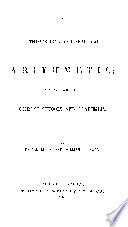 | Daniel Leach - Arithmetic - 1851 - 280 pages
...the basket? 314. To find the number of terms, when the extremes and common difference are known, — RULE. Divide the difference of the extremes by the...common difference, and the quotient, increased by 1, ivill be the number of terms. This rule may be represented by the formulas, thus: — I — a 2s n... | |
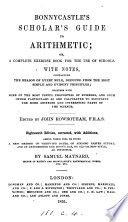 | John Bonnycastle - 1851 - 314 pages
...miles. PROBLEM II. The two extremes, and the common difference being given, to find the number of terms. RULE. Divide the difference of the extremes by the...common difference, and the quotient, increased by 1, will be the number of terms required.* that the total increase, divided by the number of additions,... | |
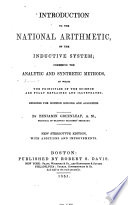 | Benjamin Greenleaf - 1851 - 332 pages
...of the extremes, and the product divided by 2, the quotient will be the sum of the series. Hence the RULE. — Divide the difference of the extremes by the common difference, and add 1 to the quotient ; multiply this sum by the sum of the extremes, and half the product is the sum... | |
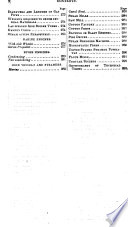 | Charles Haynes Haswell - Engineering - 1851 - 346 pages
...12X(13~-2)~78 J3ns. When the Common Difference and the Extremes are given, to find the Number of Terms. RULE.— Divide the difference of the extremes by the common difference, and add one to the quotienL EXAMPLE. — A man travelled 3 miles the first day, 5 the second, 7 the third,... | |
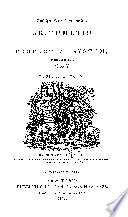 | Roswell Chamberlain Smith - Arithmetic - 1852 - 316 pages
...12. 31. Hence, when the extremes and common difference are given, to find the number of terms : — Divide the difference of the extremes by the common difference, and the quotient, increased by I, will be the answer. 32. If the extremes be 3 and 45, and the common difference 6 what is the number... | |
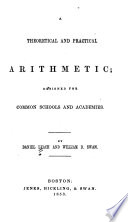 | Daniel Leach - Arithmetic - 1853 - 622 pages
...the basket? 314. To find the number of terms, when the extremes and common difference are known, — RULE. Divide the difference of the extremes by the...common difference, and the quotient, increased by 1, will be the number of terms. This rule may be represented by the formulas, thus : — I — a , , 2s... | |
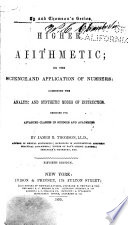 | James Bates Thomson - Arithmetic - 1855 - 436 pages
...common difference ? GO5. To find the number of terms, when the extremes and common difference are given. Divide the difference of the extremes by the common difference, and the quotient increased by 1 -will be the number of terms. OBS. The truth of this principle is manifest from the manner in which... | |
 | Roswell Chamberlain Smith - Arithmetic - 1856 - 334 pages
...12. 31. Hence, when the extremes and common difference are given, to find the number of terms : — Divide the difference of the extremes by the common difference, and the quotient, increased by 1, will be the answer. 32. If the extremes be 3 and 45, and the common difference 6. what is the number... | |
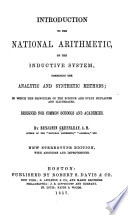 | Benjamin Greenleaf - Arithmetic - 1857 - 336 pages
...of differences ; therefore, 9 -j- 1 = 10 is the number of terms in this series. Hence the following RULE. — Divide the difference of the extremes by...common difference, and the quotient, increased by 1, will be the number of terms required. EXAMPLES FOR PRACTICE. 1. If the extremes of a series are 4 and... | |
 | Charles Guilford Burnham - 1857 - 342 pages
...When the first and last terms, and the common difference are given, to find the number of terms — RULE. Divide the difference of the extremes by the common difference, and the quotient will be 1 less than the number of terms. 10. If the first term of a series be 2, and the last term... | |
| |